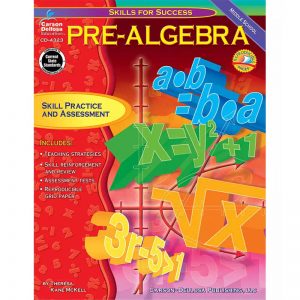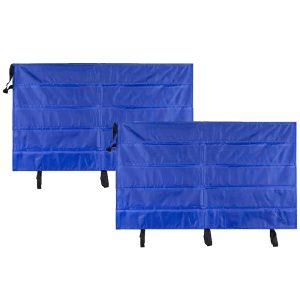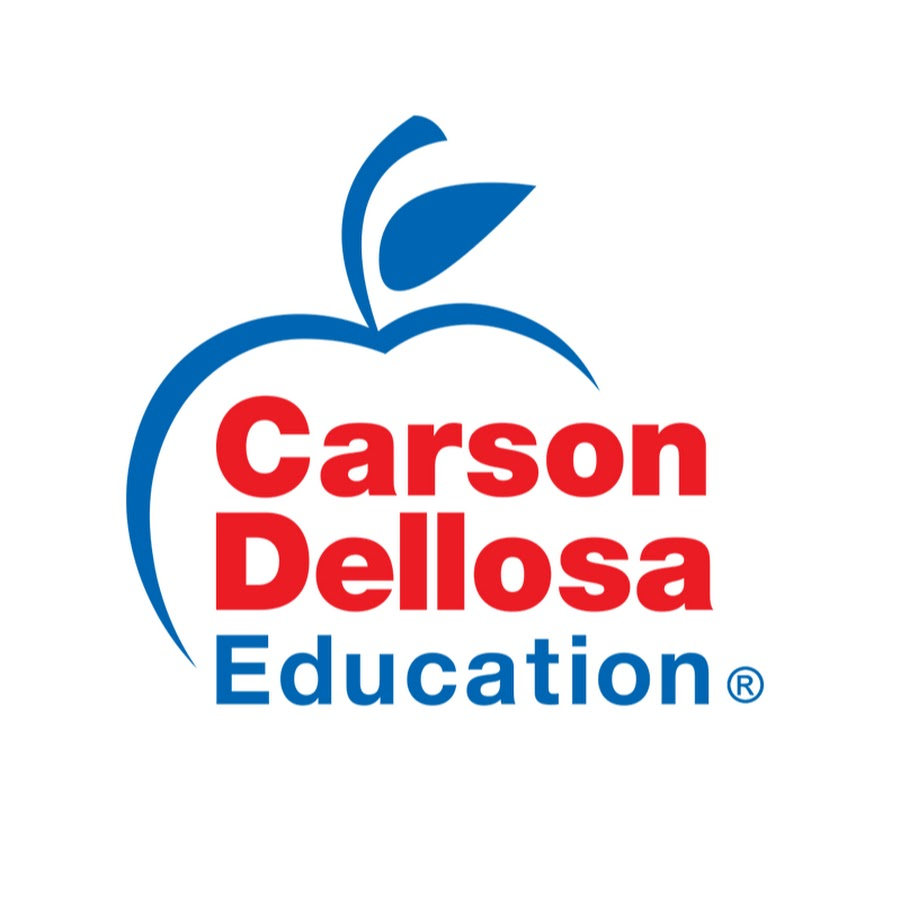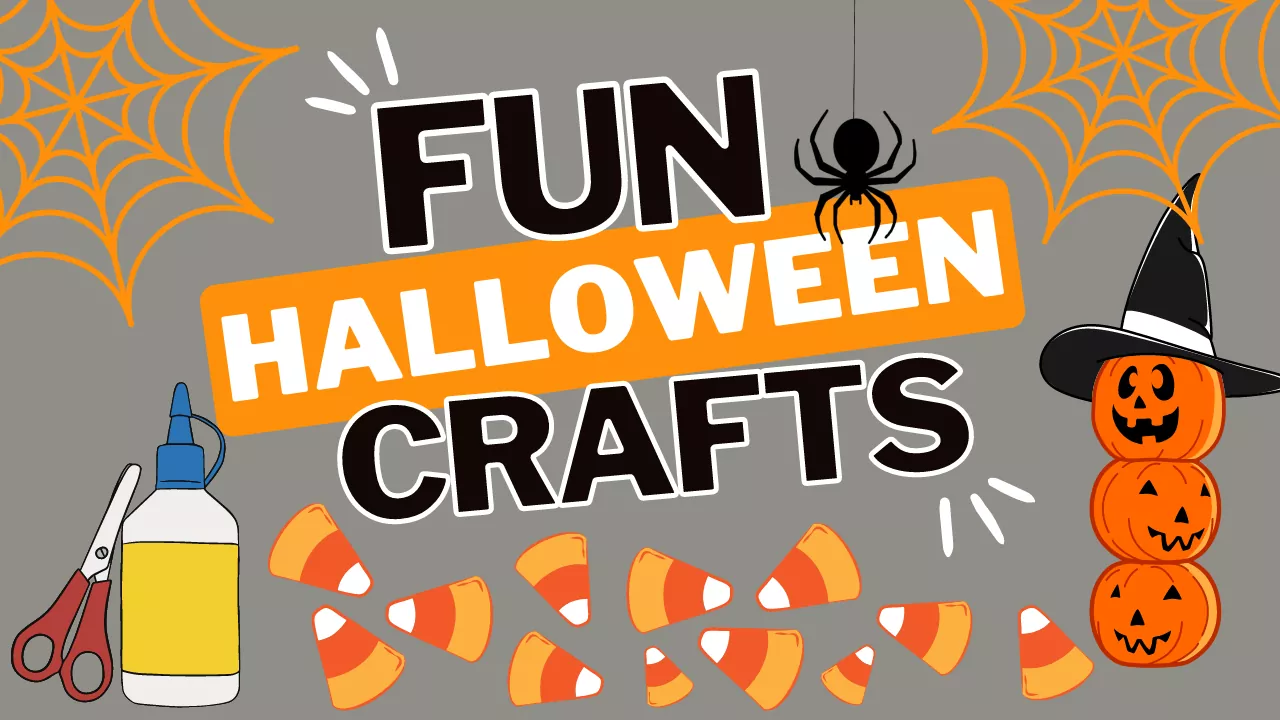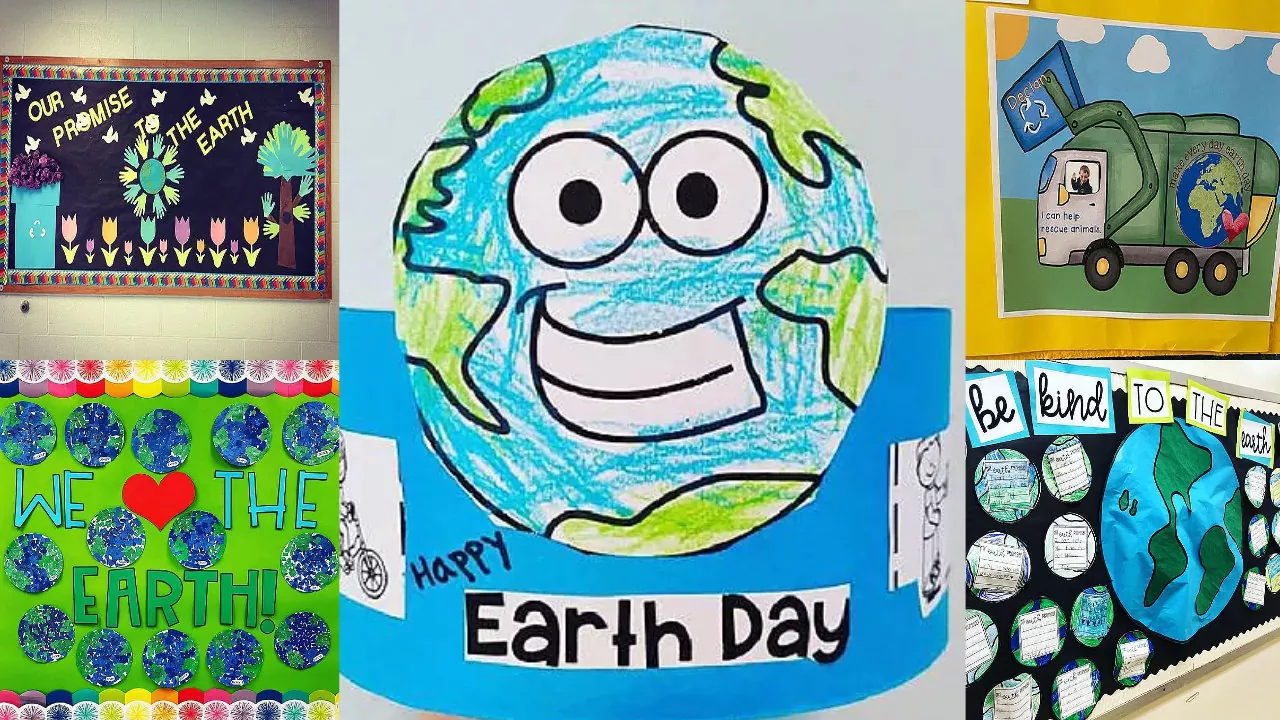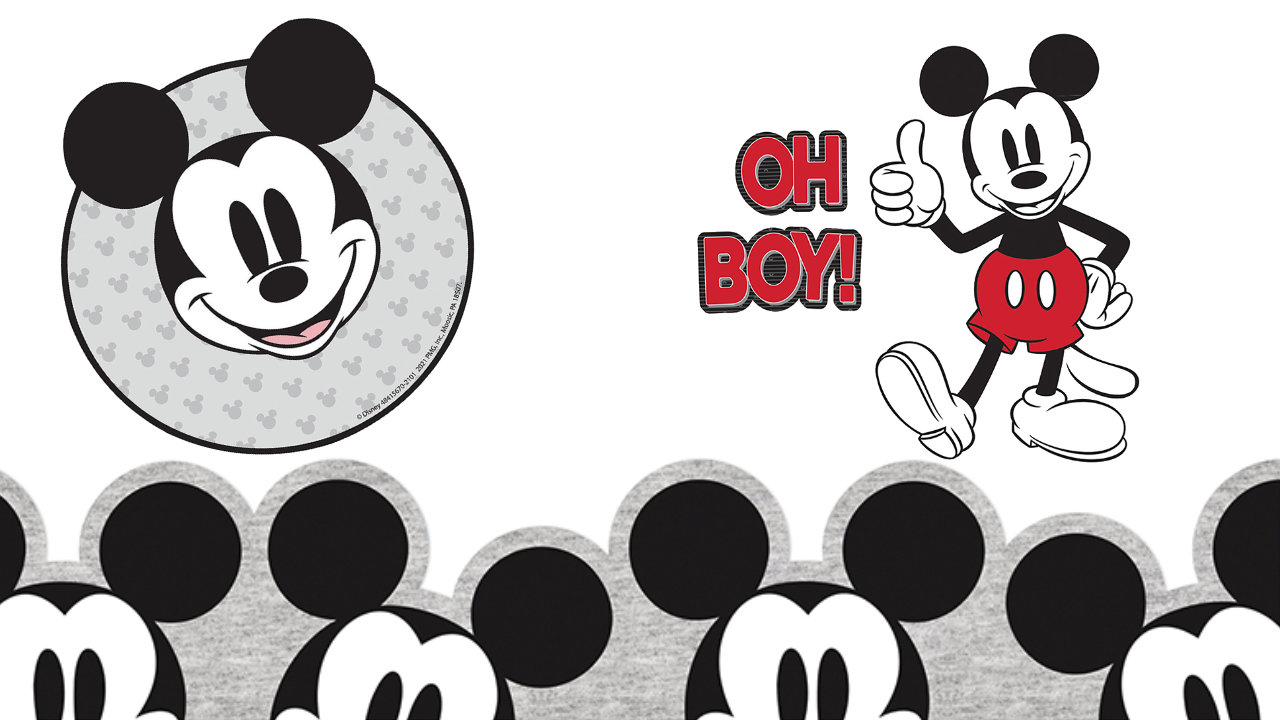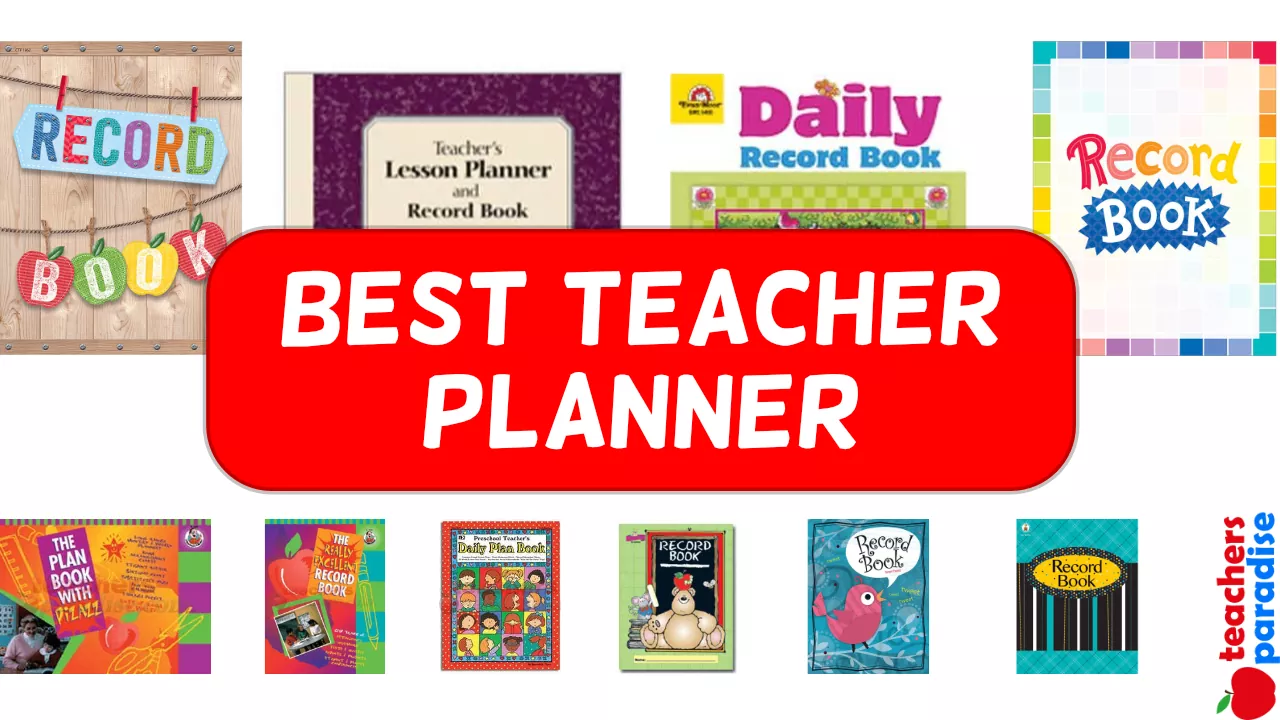The Cool, Awesome, Simple Science Series – 62 Experiments in Color
Science Fair Ideas for Elementary Grades
- Anatomy
- Animal Science
- Bacteriology
- Chemical Change
- Environmental Science
- Heat Energy
- Plant Science
WORKSHEET & Sample PDF Activity
[adinserter block=”2″]
Sample PDF Activity
[adinserter block=”3″]
Anatomy – Lung and Diaphragm
30 minutes
Get it Together
- 16-ounce plastic soda bottle
- 2-9″ balloons
- Electrical tape
- Straw
- Canning lid (same diameter as the bottle)
- Modeling clay
- Scissors
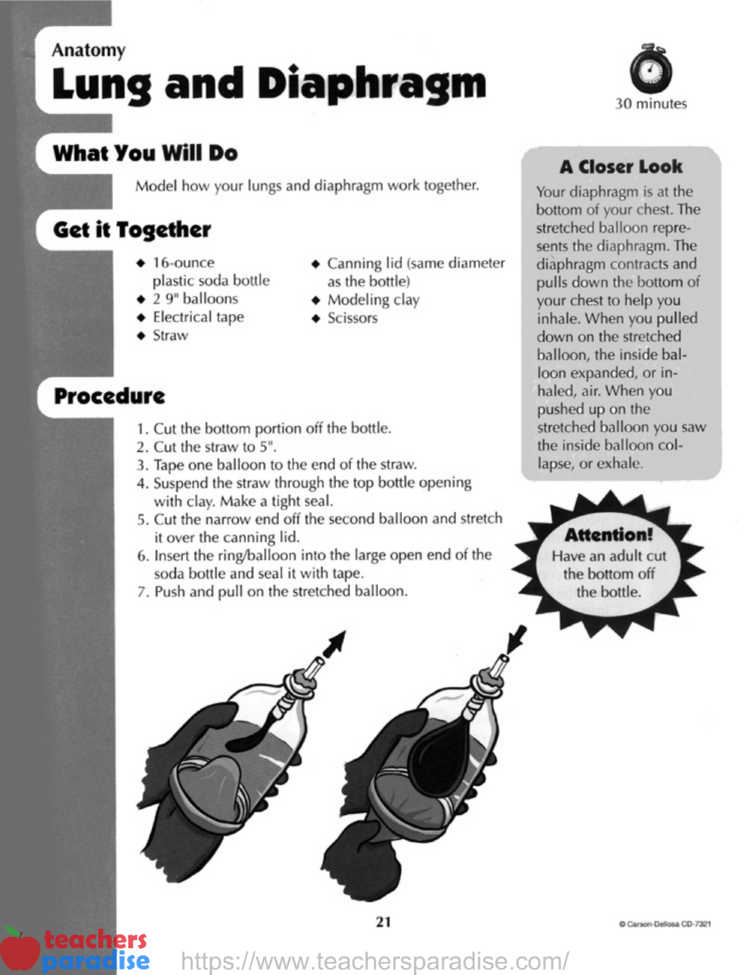
Procedure
- Cut the bottom portion off the bottle.
- Cut the straw to 5″.
- Tape one balloon to the end of the straw.
- Suspend the straw through the top bottle opening with clay. Make a tight seal.
- Cut the narrow end off the second balloon and stretch it over the canning lid.
- Insert the ring/balloon into the large open end of the soda bottle and seal it with tape.
- Push and pull on the stretched balloon.
Attention! Have an adult cut the bottom off the bottle.
A Closer Look
Your diaphragm is at the bottom of your chest. The stretched balloon represents the diaphragm. The diaphragm contracts and pulls down the bottom of your chest to help you inhale. When you pulled down on the stretched balloon, the inside balloon expanded, or inhaled, air. When you pushed up on the stretched balloon you saw the inside balloon collapse, or exhale.
Animal Science – Just Ducky
5 minutes
Get it Together
- Vegetable shortening
- Paper
- Scissors
- Water
- Bowl
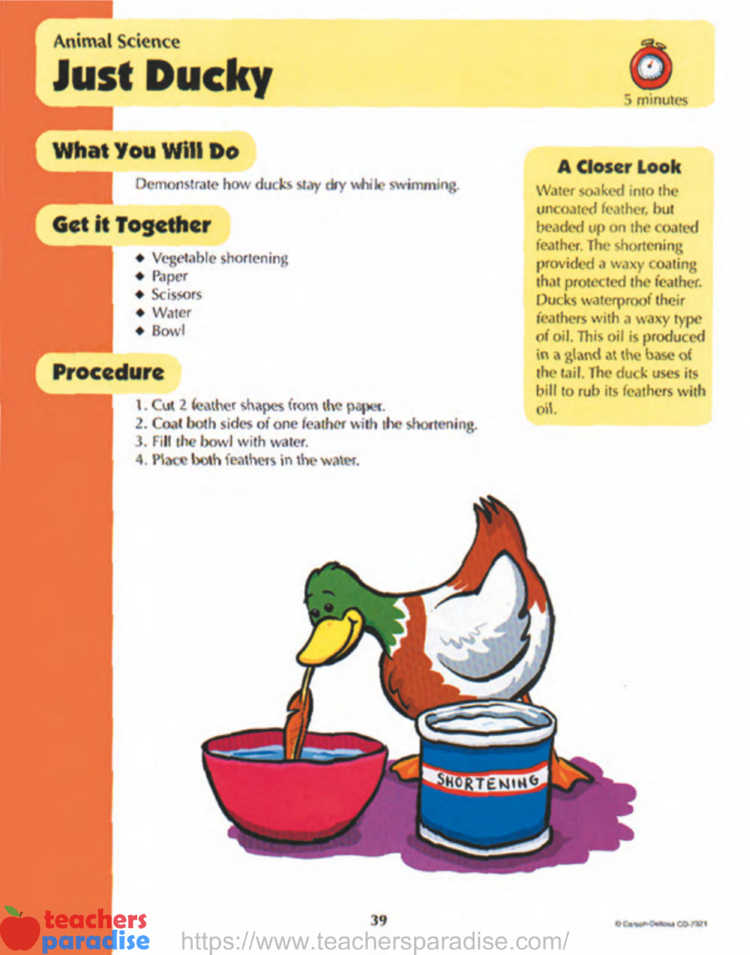
Procedure
- Cut 2 leather shapes from the paper.
- Coat both sides of one feather with the shortening.
- Fill the bowl with water. 4. Place both feathers in the water.
A Closer Look
Water soaked into the uncoated feather, but beaded up on the coated feather. The shortening provided a waxy coating that protected the feather. Ducks waterproof their feathers with a waxy type of oil. This oil is produced in a gland at the base of the tail. The duck uses its bill to rub its feathers with oil.

